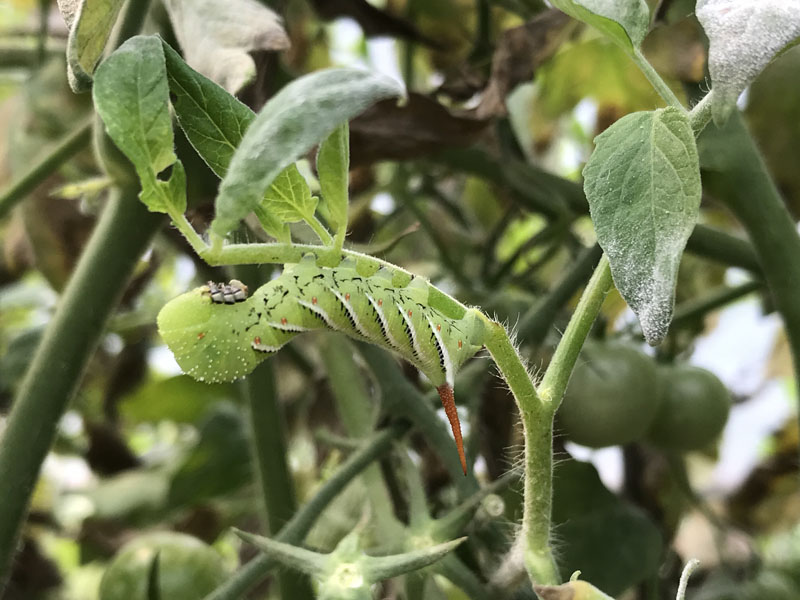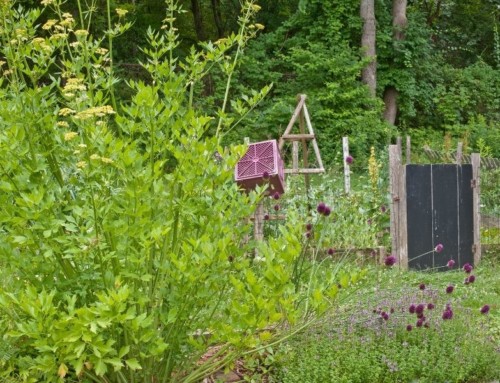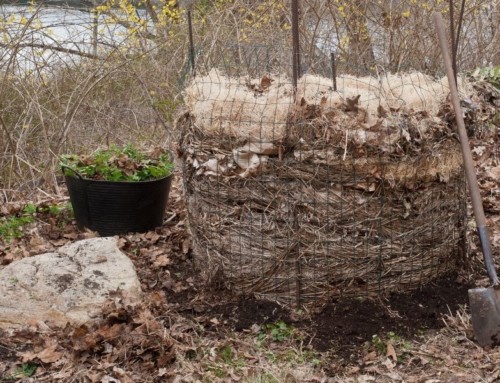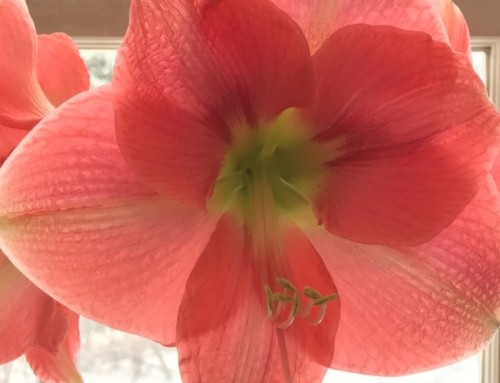A subscriber to my newsletter, Eco-Friendly News, Views, Clues and How-To’s wrote, asking “Am I right to leave alive the tomato hornworms that have the parasitic wasps on their backs?”
My reply – “Right on! The eggs are those of a braconid wasp, which is a super biological control of garden pests.”
I was wrong about a couple things – the stuck-on things that look like rice grains aren’t eggs, they’re cocoons. And the wasp is host-specific, so it doesn’t go after broccoli or carrot pests, for instance.
Female braconid wasps specializing on tomato and tobacco hornworms pierce the caterpillar’s skin with their ovipositor, deposit an egg and an immune system disabling polydnavirus inside.
The larvae eat the hornworm from inside, chew their way out to spin white cocoons, from which tiny adults emerge and fly off to repeat the life cycle. Grisly, but that’s life.
Braconid wasps as a family (about 2000 species) are the gardener’s friend. Most of these tiny insects are host-specific parasitoids that lay eggs on or in a wide range of pests like aphids and cabbage worms.
Adult braconid wasps feed on nectar and pollen of small flowers, so plant lots of them to attract these killer-good biological control insects.
The handsome creature in the photo above is the closely related tobacco hornworm, pretty much identical to the tomato hornworm, except the “horn” on it’s rear end is red rather than black.
It takes a lot of tomato or tobacco leaves to grow a 4” hornworm. They’re not worms at all, but caterpillars. They will consume other nightshade family plants too, and there are good reasons to let them.
Click the button below to learn about the hornworm’s amazing transformation in life beyond the tomato patch.
Life Beyond the Tomato Patch
Megan Haney, organic farmer par excellence at Marble Valley Farm in Kent, CT, located the hornworm for me to photograph in the upper reaches of her trellised tomatoes.
She understandably doesn’t take kindly to crop consuming creatures. If she finds hornworms with cocoons attached, she lets the wasps complete their life cycle. If not – squish.
Home gardeners can take a looser approach, foster a beautiful pollinating moth and still have their tomatoes.
If it escapes the attention of braconid wasps and completes its life cycle, the hornworm caterpillar metamorphoses into the sphinx moth, a banded mottled grey-brown hummingbird moth with a 4-5” wingspan.
I have found hornworms on nicotiana plants, which are, after all, ornamental tobaccos. They also feed on horsenettle, jimsonweed and moonflowers.
Why not pick them off your tomatoes and relocate them to an alternate food source, where you don’t mind if they munch away. Or raise some inside and observe the miraculous transformation.
Hornworms are a mixed blessing.
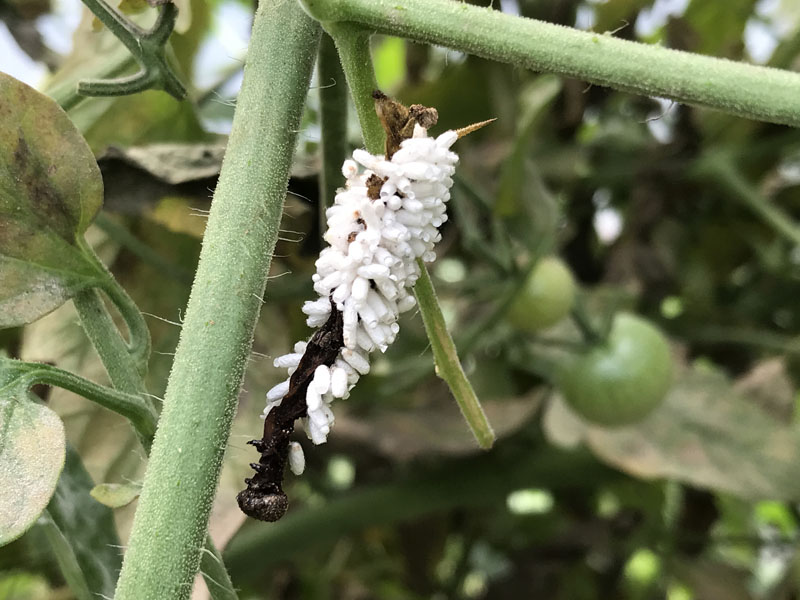
Cocoons of parasitoid brachonid wasp on hornworm
